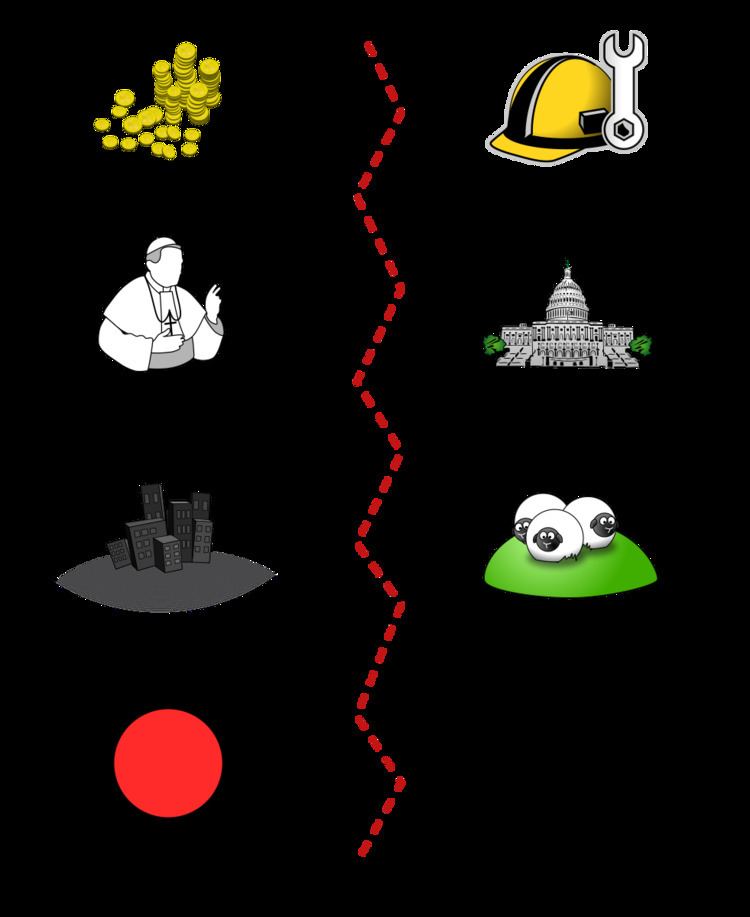 | ||
In political science, cleavage is the division of voters into voting blocs.
The preliminary assumption is that voters do not come in predefined groups of pros and cons for or against a certain subject. Ballot analysis assumes that voters opt for a certain party or decide for the solution or option that comes closest to their own position. Cleavage separates the voters into advocates and adversaries on a certain issue, or voting for a certain party. If you imagine parties on a horizontal line for a certain issue, cleavage is the vertical line that divides the parties into supporters and opponents of the issue.
Examples
There are numerous cleavages in society, but Seymour Martin Lipset and Stein Rokkan (1967) defined four basic cleavages for western civilization after the Industrial Revolution. According to Lipset and Rokkan, these cleavages determined the emergence and the content of all European political parties.
Contemporary ballot analysis speaks of the emergence of new cleavages. The traditional opposition between owner and worker (capital and labour) is being differentiated further among those who have work/are employable and those who are not. Further, sex becomes another cleavage, especially in regard to getting and maintaining a paid labour position.
In some 21st century Western European countries (e.g. Austria, Denmark, Norway and Switzerland), it has been suggested that a new cultural divide has arisen, challenging the old primary political cleavage over economic conflicts. This transformation has occurred since the late 1960s, with the New Left that arose in this period espousing libertarian and universalistic values, and a populist right reaction arising from the 1980s espousing traditionalist and communitarian ones.
